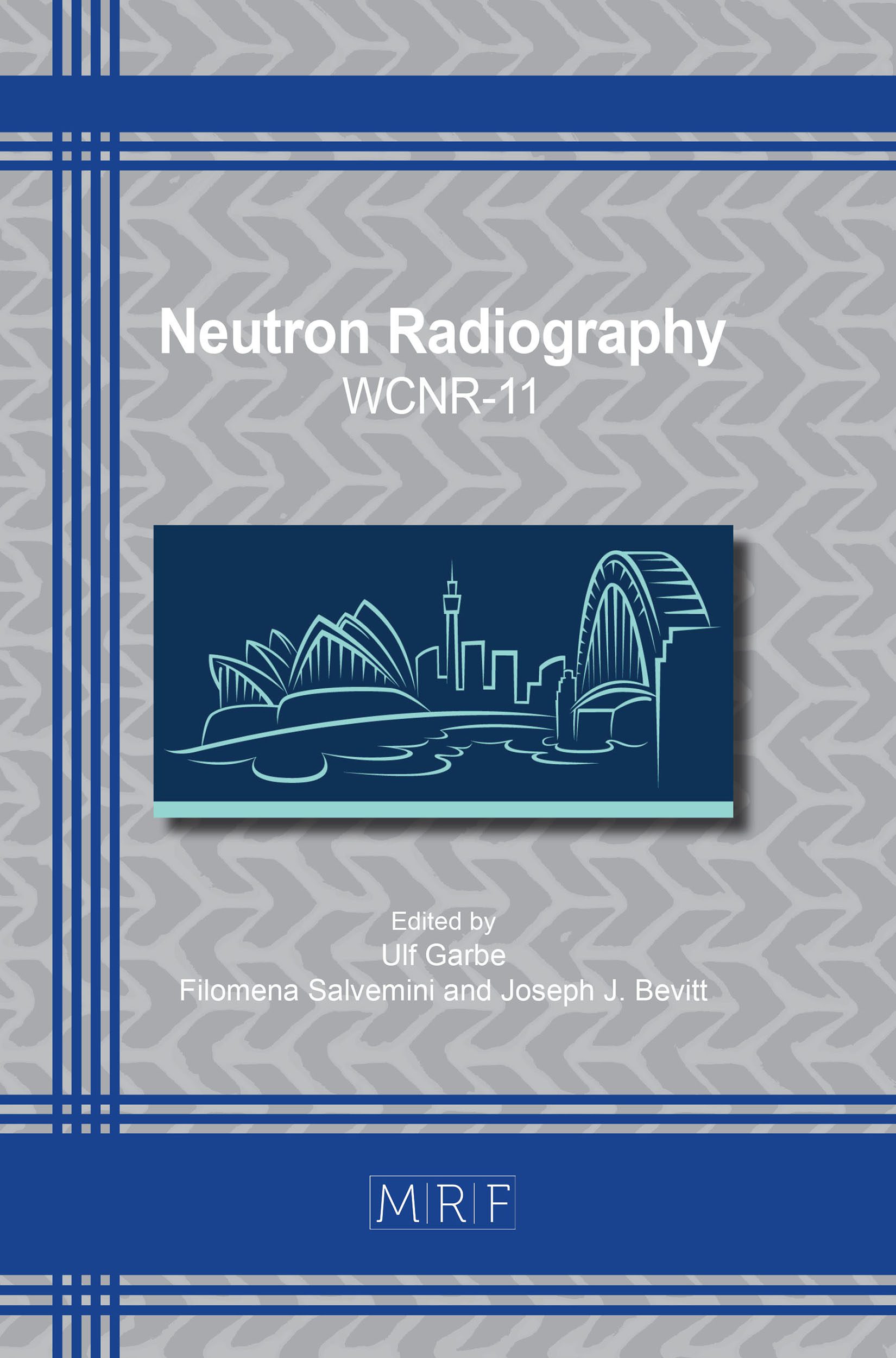3D Reconstruction of the Rotational Axis in Fission Neutron Tomography
Oliver Kalthoff, Thomas Bücherl
download PDFAbstract. In tomography, a misalignment of the rotational axis can introduce blurring. We present intensity-based image registration to calculate the axis’ components in three-dimensional space. We have shown that the axis can be deduced from rotating and translating image pairs acquired at 0° and 180°. No prior experimental calibration or any a-priori knowledge about the system’s mechanical setup is necessary. Three samples of different symmetry and homogeneity were examined to experimentally assess the numerical effects of image registration.
Keywords
Fission Neutron Tomography, Image Registration, Rotation Axis
Published online 1/5/2020, 6 pages
Copyright © 2020 by the author(s)
Published under license by Materials Research Forum LLC., Millersville PA, USA
Citation: Oliver Kalthoff, Thomas Bücherl, 3D Reconstruction of the Rotational Axis in Fission Neutron Tomography, Materials Research Proceedings, Vol. 15, pp 185-190, 2020
DOI: https://doi.org/10.21741/9781644900574-29
The article was published as article 29 of the book Neutron Radiography
![]() Content from this work may be used under the terms of the Creative Commons Attribution 3.0 licence. Any further distribution of this work must maintain attribution to the author(s) and the title of the work, journal citation and DOI.
Content from this work may be used under the terms of the Creative Commons Attribution 3.0 licence. Any further distribution of this work must maintain attribution to the author(s) and the title of the work, journal citation and DOI.
References
[1] Z. Ji et al., Calibration and Correction Method of the Deflection Angle of Rotation Axis Pro-jection On Neutron Tomography, Physics Procedia 88 (2017) 299-305. https://doi.org/10.1016/j.phpro.2017.06.041
[2] Heinz Maier-Leibnitz Zentrum et al., NECTAR: Radiography and tomography station using fission neutrons, Journal of large-scale research facilities 1 (2015) A19. https://doi.org/10.17815/jlsrf-1-45
[3] D. Gürsoy et al., TomoPy: a framework for the analysis of synchrotron tomographic data, J. Synchrotron Rad. 21 (2014) 1188-1193. https://doi.org/10.1107/S1600577514013939
[4] T. Donath, F. Beckmann, A. Schreyer, Automated determination of the center of rotation in tomography data, J. Opt. Soc. Am. A 23(5) (2006) 1048-1057. https://doi.org/10.1364/JOSAA.23.001048
[5] Y. Yang et al., Registration of the rotation axis in X-ray tomography, J. Synchrotron Rad. 22 (2015), 452–457. https://doi.org/10.1107/S160057751402726X
[6] N. Vo, M. Drakopoulos, R.C. Atwood, C. Reinhard, Reliable method for calculating the center of rotation in parallel-beam tomography, Opt. Express 22 (2014) 19078-19086. https://doi.org/10.1364/OE.22.019078
[7] K. Osterloh, T. Bücherl, U. Zscherpel, U. Ewert, Image recovery by removing stochastic artefacts identified as local asymmetries, Journal of Instrumentation 7(4) (2012) C04018. https://doi.org/10.1088/1748-0221/7/04/C04018
[8] L.G. Brown, A survey of image registration techniques, ACM Computing Surveys 24(4), 325-376. https://doi.org/10.1145/146370.146374
[9] M. Capek, Optimisation strategies applied to global similarity based image registration methods, WSCG ’99: 7th International Conference in Central Europe on Computer Graphics (1999) 369-374.
[10] P. Thévenaz, U.E. Ruttimann, M. Unser, A pyramid approach to subpixel registration based on intensity, IEEE Trans. Image Processing 7(1) (1998) 27-41. https://doi.org/10.1109/83.650848
[11] T. Köhler, A projection access scheme for iterative reconstruction based on the golden section, IEEE Symposium Conference Record Nuclear Science 6 (2004), 3961-3965
[12] J. Modersitzky, Numerical methods for image registration, Oxford University Press on Demand, 2004. https://doi.org/10.1093/acprof:oso/9780198528418.003.0008
[13] J. Modersitzky, FAIR: flexible algorithms for image registration, SIAM (2009). https://doi.org/10.1137/1.9780898718843































